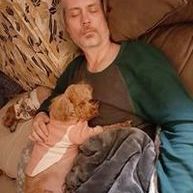I'm following the following article which uses the depth buffer to implement ssao.http://theorangeduck.com/page/pure-depth-ssao
I have got the following result result image I don't know what's wrong.. I made sure that the depth buffer image is correct and the random texture is correct also.
As you see there are antialiasing effect, and its very dark..
I'm not doing any post processing like blurring.
Would someone take a look at the shader ? maybe there is something wrong..
#version 100
precision mediump int;
precision mediump float;
uniform sampler2D DepthMap;
uniform sampler2D RandomtextureSampler;
varying vec2 uv;
vec3 normal_from_depth(float depth, vec2 texcoords) {
const vec2 offset1 = vec2(0.0,0.001);
const vec2 offset2 = vec2(0.001,0.0);
float depth1 = texture2D(DepthMap, texcoords + offset1).r;
float depth2 = texture2D(DepthMap, texcoords + offset2).r;
vec3 p1 = vec3(offset1, depth1 - depth);
vec3 p2 = vec3(offset2, depth2 - depth);
vec3 normal = cross(p1, p2);
normal.z = -normal.z;
return normalize(normal);
}
void main()
{
const float total_strength = 1.40;
const float base = 0.2;
const float area = 0.0075;
const float falloff = 0.000001;
const float radius = 0.0002;
const int samples = 16;
vec3 sample_sphere[16];
sample_sphere[0] = vec3( 0.5381, 0.1856,-0.4319);
sample_sphere[1] = vec3( 0.1379, 0.2486, 0.4430);
sample_sphere[2] = vec3( 0.3371, 0.5679,-0.0057);
sample_sphere[3] = vec3(-0.6999,-0.0451,-0.0019);
sample_sphere[4] = vec3( 0.0689,-0.1598,-0.8547);
sample_sphere[5] = vec3( 0.0560, 0.0069,-0.1843);
sample_sphere[6] = vec3(-0.0146, 0.1402, 0.0762);
sample_sphere[7] = vec3( 0.0100,-0.1924,-0.0344);
sample_sphere[8] = vec3(-0.3577,-0.5301,-0.4358);
sample_sphere[9] = vec3(-0.3169, 0.1063, 0.0158);
sample_sphere[10] = vec3( 0.0103,-0.5869, 0.0046);
sample_sphere[11] = vec3(-0.0897,-0.4940, 0.3287);
sample_sphere[12] = vec3( 0.7119,-0.0154,-0.0918);
sample_sphere[13] = vec3(-0.0533, 0.0596,-0.5411);
sample_sphere[14] = vec3( 0.0352,-0.0631, 0.5460);
sample_sphere[15] = vec3(-0.4776, 0.2847,-0.0271);
vec3 random = normalize( texture2D(RandomtextureSampler, uv * 4.0).rgb );
float depth = texture2D(DepthMap, uv).r;
vec3 position = vec3(uv, depth);
vec3 normal = normal_from_depth(depth, uv);
float radius_depth = radius/depth;
float occlusion = 0.0;
for(int i=0; i < 16; i++) {
vec3 ray = radius_depth * reflect(sample_sphere[i], random);
vec3 hemi_ray = position + sign(dot(ray,normal)) * ray;
float occ_depth = texture2D(DepthMap, clamp(hemi_ray.xy, 0.0, 1.0)).r;
float difference = depth - occ_depth;
occlusion += step(falloff, difference) * (1.0-smoothstep(falloff, area, difference));
}
float ao = 1.0 - total_strength * occlusion * (1.0 / 16.0);
float oc = clamp(ao + base, 0.0, 1.0);
gl_FragColor = vec4(oc,oc,oc, 1.0) ;
}The depth texture is a render to texture and its format PF_FLOAT16R







